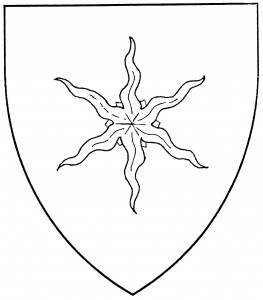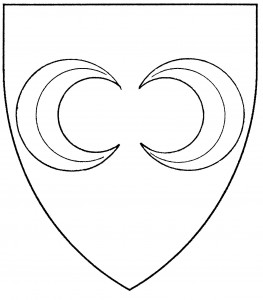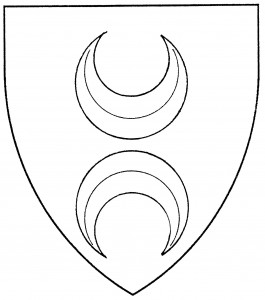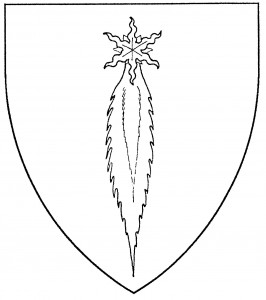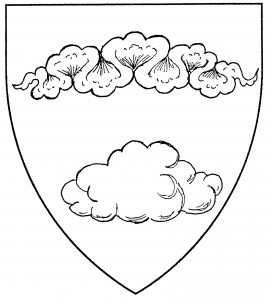An estoile is a heavenly body, the heraldic representation of a star in English heraldry. Its use dates from the 13th Century, where it was often interchangeable with a mullet; toward the end of period, mullets were more often used to represent stars in Continental heraldry, while estoiles performed that function in English heraldry, as in the arms of Sir Francis Drake, 1581 [Wagner 72].
As defined in later period heraldry, the estoile has wavy rays, numbering six by default. One ray points to chief by default. If the number of rays is other than six, this must be explicitly blazoned; an estoile with fewer than six rays is deemed a step from period practice. For related charges, see comet, sun.
Sequora of Zagamar bears: Gyronny ermine and Or, an estoile gules.
Giovanni Basilio de Castronovo bears: Counter-ermine, three estoiles Or.
Matilda Stoyle bears: Azure, three estoiles argent.
